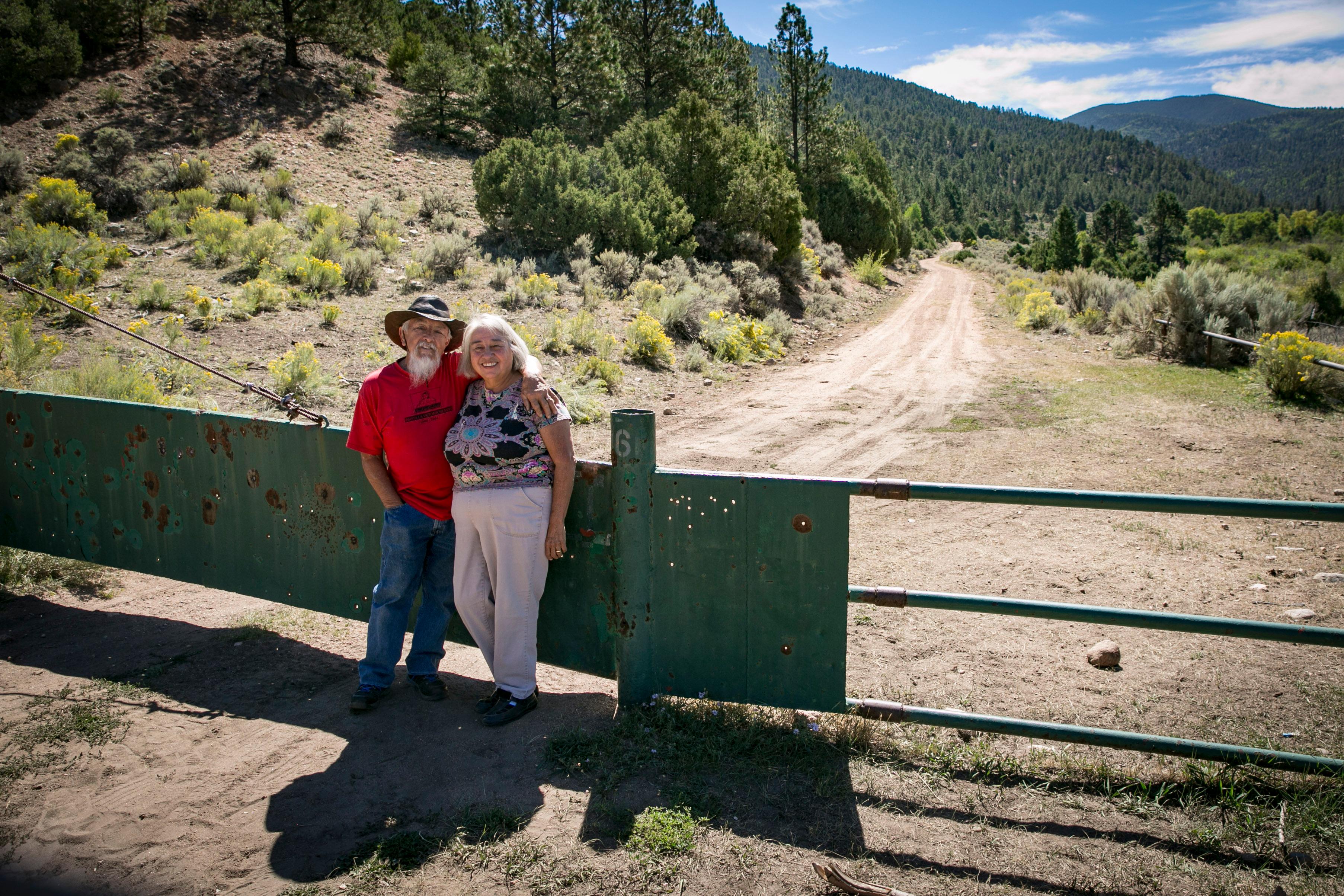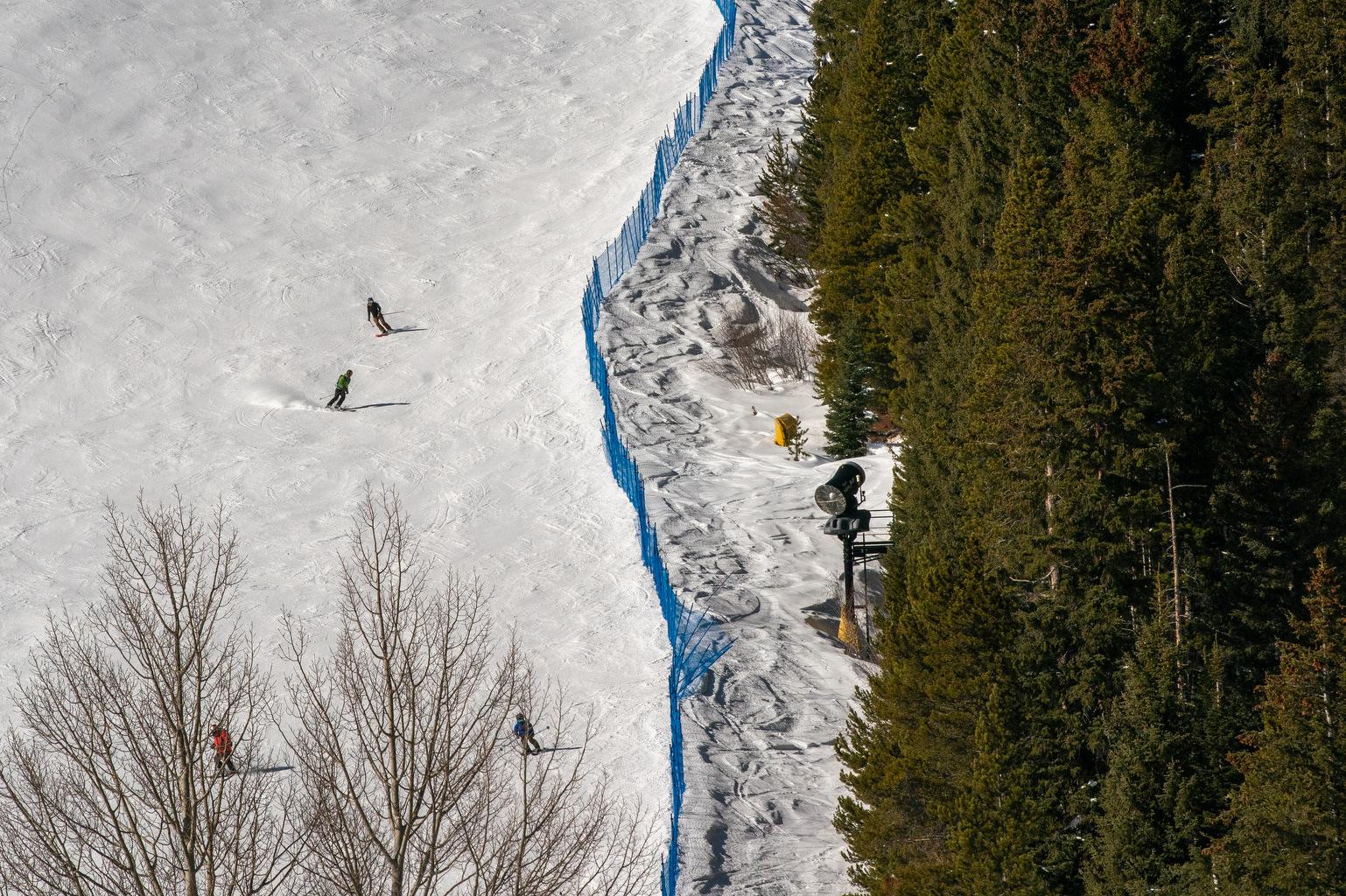

In 1863, a businessman from Taos promised the “benefits of pastures, water, firewood and timber” to settlers on a stretch of the Sangre De Cristo mountain range in present-day south-central Colorado.
In 2017, the son of a Texas oil billionaire purchased a portion of that same stretch of the Sangres — the 83,000-acre Cielo Vista Ranch — for an eye-popping $105 million.
On Wednesday, the Colorado Court of Appeals will hear arguments over who should be allowed access. It’s the latest chapter in what’s been called the longest-running civil legal dispute in the state, dating to a lawsuit filed in 1981.
Heirs to those original settlers won a major victory more than 15 years ago, when the Colorado Supreme Court issued two rulings that allowed them, and some nearby landowners, to graze livestock and gather wood.
The new owner is appealing the implementation of the Supreme Court’s decree, arguing that too many people have access and that some are abusing those rights. The group representing the heirs said the new owner rejected terms that could have avoided the current legal appeal. Meanwhile, the owner, William Harrison, said in an email that he’s made several unsuccessful attempts to speak with that local group since buying the property.
So, both sides are bracing for another legal fight.
“We are ready to continue the struggle,” said Shirley Romero-Otero, president of the Land Rights Council. “There’s no way we are backing down after 37 years. That’s just not going to happen.”
“Our Mother Mountain”
About 20 minutes outside of San Luis, the closest town to the Cielo Vista Ranch, a rusty metal gate stretches across a winding dirt road. There are eight similar gates on the ranch’s border, each sealed with a padlock.

Jose Martinez has a key that can unlock each one. He was born in an adobe home in San Francisco, Colorado, one of a handful of historic Hispano villages in the southeast corner of the San Luis Valley. He grew up in the shadow of the ranch, which locals call La Sierra, and the 14,047-foot mountain within its boundaries, Culebra Peak.
Now sporting a wispy white beard and a weathered leather hat, Martinez remembers hunting on horseback in the ranch’s canyons and gathering firewood with his father.
“This was our mother mountain,” said Martinez, who still collects wood on the ranch. “Everything that we had back then — a lot of it came from this mountain.”
That stopped in 1960, when a wealthy North Carolina businessman, Jack Taylor, purchased the ranch. Within a few years, Taylor fenced the property off.
“Everything changed,” Martinez said, his voice cracking as he turned to look up at the mountain range. “I still feel that pain.”
A range war broke out between Taylor and the locals. Taylor hired armed men to protect his land. In 1975, Taylor himself was shot through the foot while at home on the ranch, though the gunman was never identified.
“He was a tyrant,” Martinez said of Taylor. “He was a very, very mean man.”
Simmering Tensions
That combative relationship is why many were offended when Harrison, Cielo Vista’s new owner, offered last December to buy access rights from anyone willing to sell them. His price: $300.
“New land owner, same old tricks,” was the headline in the Alamosa Valley Courier. “Shoot the batard [sic] in the same toe they shot Taylor,” reads the sole comment on the story.
Harrison declined to be interviewed for this story. But he provided a three-page letter he wrote to the community in January 2018 that shows he’s well aware of the ranch’s combative past.
“Understandably, given the history of how Jack Taylor interacted with the community, there is a lot of tension around anything involving the Cielo Vista Ranch,” Harrison wrote. He also explained the buyout offer was not meant to threaten anyone’s rights, “but rather to gauge the interest of individuals who may not use or ever want to use the rights and who therefore may want to sell them.”
In his letter, Harrison said he wants to reduce the number of people who have access rights. He claimed there are nearly 5,000 easement holders now, though Romero-Otero, citing records held by the Land Rights Council, said that number is under 1,000.
“It is my opinion that those are estimations that they are pulling out of their heads,” Romero-Otero said of Harrison’s figures. Harrison’s letter doesn’t explain the provenance of his numbers.
The Colorado Supreme Court, in its ruling, acknowledged its standard for determining who should have access may have been “over-inclusive.” “[B]ut considering the grave deprivation of rights suffered by the landowners over the past 40 years,” former Chief Justice Mary Mullarkey wrote, “we are unwilling to create a standard which may again unlawfully deny some landowners their guaranteed access rights.”
Disagreement Over What’s Allowed
Harrison’s letter also emphasizes that the state Supreme Court’s ruling allows access holders to use the ranch for a only narrow list of activities: gathering firewood and wood for building, and for grazing livestock. Anything beyond that, even seemingly innocuous things like fishing and picnicking, are out of bounds.
“The law is clear that these other uses are not permitted,” Harrison wrote.
Romero-Otero said her group wants to work with Harrison to come to a common ground. But she disagrees with Harrison over what should allowed on the ranch.
“If we’re going to go up there and gather wood, we’re going to take a lunch. We’re going to put our feet in the creek,” she said. “He can see it as recreation. We can see it as part of what we do as we go up there and gather wood and lumber.”
A smaller group of people, both parties say, are abusing the ranch in far more serious ways. Harrison said poaching is “rampant” on the ranch, and that his ranch hands have been threatened and shot at.
“None of this can continue and I want to find a way to eliminate it and work together,” he wrote. He also provided CPR News with a report from his ranch manager detailing alleged misuse by access holders.
Romero-Otero said just a “small minority” of access holders are responsible for such affronts. They are likely landowners new to the community who don’t appreciate the ranch’s history, she said.
“We need to sit down and discuss all of these issues,” she said.
It may be more critical than ever for both sides to find common ground. This summer, one of the state’s worst fires in history — the Spring Fire — ravaged more than 100,000 acres nearby. That means the families and the ranch’s new owner have an urgent reason to work together to protect the land.









